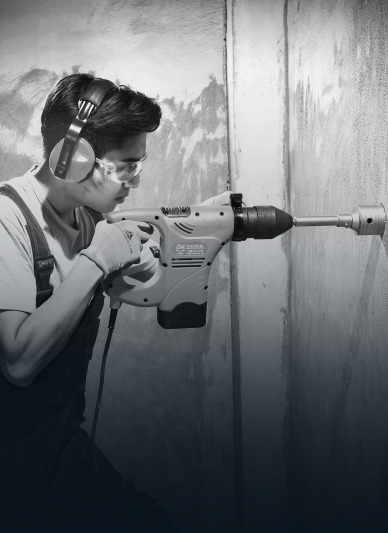What is a TCT Circular Saw Blade?
A TCT Circular Saw Blade (Tungsten Carbide Tipped Circular Saw Blade) is a specialized cutting tool used in various industries for precision cutting of materials like wood, metal, plastic, and other composites. The unique feature of TCT blades lies in their durable tungsten carbide tips, which provide superior cutting performance compared to regular steel blades.
What Does TCT Mean on Saw Blades?
The term TCT on saw blades stands for Tungsten Carbide Tipped. This refers to the material used for the teeth of the saw blade. Tungsten carbide is a compound made from tungsten and carbon, known for its exceptional hardness, wear resistance, and ability to withstand high temperatures. TCT saw blades are specifically designed for cutting through tough materials, offering superior performance compared to traditional steel blades.
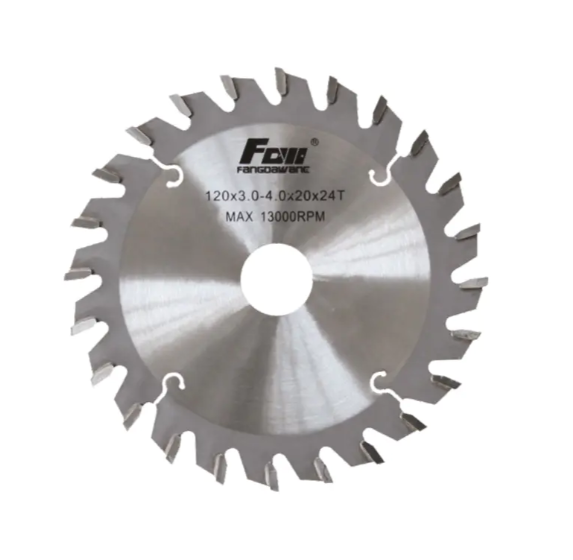
The Role of Tungsten Carbide
Tungsten carbide is one of the hardest materials known to man, making it ideal for use in cutting tools. When tungsten carbide is applied to the teeth of a saw blade, it significantly increases the blade's durability and cutting efficiency. The carbide tips are fused to the steel body of the blade, allowing it to maintain its sharpness for a much longer period than a blade made entirely of steel.
Why Choose TCT Saw Blades?
Increased Durability: The use of tungsten carbide tips helps the saw blade retain its sharpness even after prolonged use, making it ideal for heavy-duty tasks.
Precision Cutting: TCT saw blades provide clean, smooth cuts with minimal splintering, making them suitable for delicate and precise cutting tasks.
Heat Resistance: Tungsten carbide's high heat tolerance ensures that the blade can withstand the heat generated during cutting, reducing the risk of warping or dulling.
Versatility: TCT saw blades are versatile and can be used to cut through a wide range of materials, including wood, metal, plastic, and composites, depending on the design of the blade.
Applications of TCT Circular Saw Blades
TCT circular saw blades are incredibly versatile and can be used in various industries for both industrial and DIY applications. Some common uses include:
Woodworking: TCT blades are widely used for cutting different types of wood, including hardwood, softwood, and engineered wood products such as MDF and plywood.
Metalworking: These blades can also handle non-ferrous metals like aluminum, brass, and copper, making them essential tools in industries like construction and manufacturing.
Plastic Cutting: TCT blades are ideal for cutting plastic pipes, sheets, and profiles, often used in plumbing, electrical, and construction projects.
Composite Materials: TCT blades can effectively cut through composite materials like fiberglass, which is increasingly used in various industries.
Which is Better: HSS or TCT Circular Saw Blade?
HSS Circular Saw Blades
High-Speed Steel (HSS) is a tool steel that maintains its hardness at high temperatures, making it ideal for cutting materials at high speeds. HSS blades are known for their excellent resistance to heat and wear, which is why they are commonly used in applications that require precise, fast cuts.
Advantages of HSS Blades:
Cost-Effective: HSS blades are generally less expensive compared to TCT blades, making them a more budget-friendly option for light to medium cutting tasks.
Sharpness Retention: Although not as durable as TCT, HSS blades still offer good sharpness retention for relatively lighter workloads.
Versatility: HSS blades are often used for cutting through softer materials like wood, plastics, and non-ferrous metals.
Limitations of HSS Blades:
Wear and Tear: While HSS blades are heat-resistant, they are not as durable as TCT blades. They can wear down more quickly when cutting tougher materials.
Frequent Sharpening: Over time, HSS blades may lose their sharpness and require frequent sharpening, especially if used on hard or abrasive materials.
TCT Circular Saw Blades
Tungsten Carbide Tipped (TCT) blades are more specialized tools that use tungsten carbide tips fused onto the teeth of the blade. Tungsten carbide is incredibly hard, making these blades ideal for cutting through tougher materials like hardwoods, metal, and plastics.
Advantages of TCT Blades:
Exceptional Durability: TCT blades last much longer than HSS blades, as the tungsten carbide tips are far harder and more wear-resistant. This makes them suitable for heavy-duty cutting tasks.
Precise Cuts: The carbide tips allow TCT blades to maintain a sharp edge for an extended period, resulting in clean, accurate cuts.
Heat Resistance: TCT blades are better at withstanding the heat generated during extended cutting sessions. They maintain their performance even at high cutting speeds.
Versatility for Tough Materials: TCT blades are ideal for cutting through harder materials such as hardwoods, aluminum, and even thin metals.
Limitations of TCT Blades:
Higher Cost: TCT blades are more expensive than HSS blades due to the quality of the materials used and the manufacturing process.
Brittleness: Tungsten carbide is very hard but can be brittle, meaning the blade tips can chip or crack if misused or dropped.
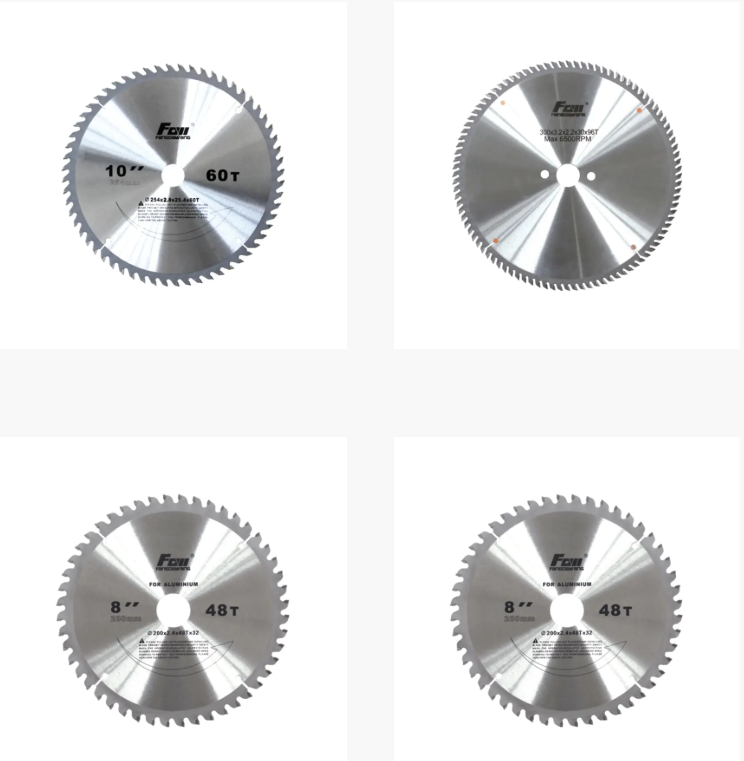
Comparison of HSS vs. TCT Circular Saw Blades
| Feature |
HSS Circular Saw Blade |
TCT Circular Saw Blade |
| Material Composition |
Made of high-speed steel, heat-resistant |
Tungsten carbide tips fused onto steel blade |
| Durability |
Less durable, wears down faster |
Extremely durable, longer lifespan |
| Cutting Precision |
Good for light tasks, may dull faster |
High precision with longer sharpness retention |
| Best for |
Softer materials like wood, plastics, non-ferrous metals |
Harder materials like hardwoods, metals, plastics |
| Cost |
Less expensive |
More expensive |
| Maintenance |
Requires frequent sharpening |
Requires less frequent maintenance |
| Heat Resistance |
Good for moderate heat |
Excellent heat resistance for extended use |
| Versatility |
Suitable for general-purpose cutting |
Ideal for heavy-duty cutting tasks |
How to Choose the Right TCT Circular Saw Blade
When selecting a TCT (Tungsten Carbide Tipped) Circular Saw Blade, there are several factors you need to consider to ensure that you are choosing the right one for your specific cutting needs. TCT blades are known for their superior durability, precision, and ability to handle tough cutting tasks, but with so many options available, making the right choice can be challenging. Below, we will explore the key elements that can help you choose the best TCT circular saw blade for your work.
1. Consider the Material You'll Be Cutting
The type of material you plan to cut is one of the most significant factors when choosing a TCT circular saw blade. TCT blades are designed for cutting various materials, and each material has its own requirements.
Wood: If you're cutting wood or wood-based materials (like MDF, plywood, or laminates), choose a blade with a finer tooth design for smoother, cleaner cuts. These blades are designed to prevent splintering and produce a precise finish.
Metals: For cutting non-ferrous metals (such as aluminum or copper), you’ll need a blade with a special tooth design that can handle the hardness of metal without wearing down quickly. These blades often have a specific tooth geometry that reduces friction and enhances the cutting efficiency.
Composites and Plastics: If you are working with composites or plastics, you need a TCT blade that is optimized for these materials. These blades are typically designed to cut without overheating the material, ensuring smooth, clean cuts without melting or chipping.
2. Tooth Configuration
The tooth design and configuration of the TCT circular saw blade play a crucial role in the cutting quality and speed. The teeth shape and number can vary based on the material and the type of cut you need.
Fine Teeth: Blades with finer teeth are ideal for clean, smooth cuts. These are typically used for precise cutting in wood, MDF, and other similar materials where a fine finish is necessary.
Coarse Teeth: Blades with larger, more spaced teeth are used for fast, aggressive cutting. These are better suited for thicker or tougher materials, as the larger teeth allow for greater material removal.
Combination Teeth: Some TCT blades feature a combination of fine and coarse teeth, making them more versatile for different types of cuts. These are useful if you need to switch between cutting different materials or want a more general-purpose blade.
3. Blade Size and Compatibility
The size of the blade you choose should be compatible with your saw and the material thickness. TCT circular saw blades come in a variety of diameters, and selecting the correct size will ensure you achieve the best cutting results.
Smaller Blades: Ideal for portable or handheld saws and are used for thinner materials. These blades are often more lightweight and are easier to handle.
Larger Blades: Used with table saws and industrial equipment, larger blades are designed for thicker materials. They offer greater stability and can handle more demanding cuts.
Make sure that the blade you choose fits the specifications of your saw, including the arbor hole size and the maximum diameter supported by your equipment.
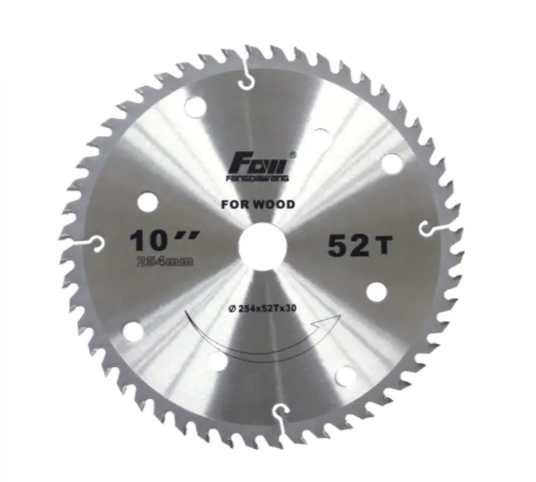
4. Cutting Speed and Feed Rate
Another important factor in choosing the right TCT blade is understanding the cutting speed and feed rate required for your job. The cutting speed can affect how cleanly and efficiently the material is cut, while the feed rate determines how quickly the material passes through the blade.
Fast Cutting Speed: If you need to make quick, rough cuts through thicker materials, you’ll need a blade that can operate at a higher speed. These blades typically have fewer teeth or larger teeth, which allow for faster material removal.
Slower Cutting Speed: For precision cuts or when working with delicate materials, you may want a blade designed for slower cutting speeds. This type of blade typically has more teeth, allowing for a finer, smoother cut.
The feed rate also affects the quality of the cut. A higher feed rate might lead to more aggressive cuts, which is suitable for some materials but may cause chipping or damage to others. Make sure to adjust the feed rate according to the type of material you are cutting.
5. Blade Coating and Durability
Some TCT blades come with special coatings that enhance their performance and durability. These coatings can help reduce friction, improve heat resistance, and prolong the blade's life.
Anti-Rust Coatings: These coatings prevent rust and corrosion, which is especially important if you're working in a humid environment or storing your tools in damp conditions.
Non-Stick Coatings: These help to reduce friction and prevent materials like resin or sap from sticking to the blade, improving its cutting performance and reducing maintenance.
The durability of the blade is also influenced by the material of the carbide tips. Tungsten carbide is known for its ability to withstand wear, but different grades of carbide may be used depending on the cutting task. Higher-grade carbide tips generally result in longer-lasting blades.
6. Noise and Vibration Control
When cutting with a circular saw, excessive vibration and noise can be an issue, especially in precision tasks. Many TCT blades are designed with noise and vibration reduction features, such as special tooth configurations or body designs that reduce the amount of noise generated during cutting.
If you are working in an environment where noise or vibration can be a concern, look for a TCT blade with features that help mitigate these factors. This can lead to a smoother cutting experience and reduce operator fatigue.
7. Maintenance and Resharpening
One of the advantages of TCT blades is their ability to be resharpened. Over time, as the carbide tips wear down, a professional service can resharpen the blade, extending its useful life.
If you plan to use your TCT blade frequently, it's important to understand the maintenance and resharpening process. Some TCT blades are designed to be sharpened multiple times before they need to be replaced, which makes them a more cost-effective option in the long run.
Choosing the right TCT circular saw blade is crucial for ensuring optimal cutting performance and efficiency. By considering the material to be cut, tooth design, blade size, cutting speed, blade coatings, and other factors, you can select the perfect blade for your needs.
Here's a summary of the key points to consider when choosing your TCT circular saw blade:
| Factor |
Considerations |
| Material to Be Cut |
Choose based on whether you're cutting wood, metal, plastic, or composite |
| Tooth Design |
Fine teeth for smooth cuts, coarse teeth for fast cuts, combination teeth for versatility |
| Blade Size & Compatibility |
Ensure the blade fits your saw and matches the material thickness |
| Cutting Speed & Feed Rate |
Choose based on whether you need fast or precise cuts |
| Blade Coating |
Look for coatings that enhance performance and longevity |
| Durability |
Consider the longevity of the blade based on cutting frequency |
| Maintenance |
Determine if the blade is resharpenable to extend its life |
Maintenance and Care for TCT Circular Saw Blades
Proper maintenance and care for TCT (Tungsten Carbide Tipped) Circular Saw Blades are essential to ensure their longevity and optimal performance. While TCT blades are known for their durability and ability to cut through tough materials, neglecting their maintenance can lead to reduced cutting efficiency, a shorter lifespan, and potentially even blade damage. By following a few simple steps, you can extend the life of your TCT saw blade and maintain its cutting precision.
1. Regular Cleaning
Keeping your TCT saw blade clean is one of the most basic but essential tasks for maintaining its performance. Over time, saw blades accumulate residue, such as wood sap, resin, metal shavings, or dust, which can reduce the blade's cutting efficiency.
Clean After Every Use: After each use, it's important to remove any buildup on the blade. You can use a soft cloth or brush to wipe the blade down, removing any debris.
Use a Degreaser or Cleaner: For tougher residues, especially on blades used for cutting wood or metal, you may need to use a specialized degreaser or cleaner designed for saw blades. Apply the cleaner and allow it to sit for a few minutes before wiping it off.
Avoid Harsh Chemicals: Some chemicals may cause damage to the blade or its coating. Always choose cleaners that are safe for metal surfaces.
2. Inspect the Blade for Damage
Routine inspections help to detect any damage that could affect the blade's performance. Regularly check for signs of wear or damage, such as:
Chipped or Broken Teeth: Inspect the tungsten carbide tips for any chips or fractures. Damaged teeth can result in rough or inaccurate cuts and can also cause further damage to the material being cut.
Bending or Warping: Ensure the blade is still flat and not warped. A bent blade can lead to uneven cuts and may cause damage to your saw.
Loose or Worn Parts: Check the blade's arbor hole and any other connecting parts for wear. Loose parts or worn areas can lead to vibrations and instability during cutting.
If you notice any of these issues, it's important to replace or repair the blade promptly to avoid compromising your work.
3. Sharpening the Blade
TCT blades, despite their durability, eventually lose their sharpness over time. The carbide tips can become dull from extensive use, especially when cutting hard or abrasive materials. Regular sharpening ensures that your TCT blade maintains its cutting precision and efficiency.
Resharpening: Unlike regular steel blades, TCT blades can be resharpened multiple times. A professional sharpening service will use specialized equipment to restore the tungsten carbide tips. Avoid sharpening the blade yourself unless you have the proper tools and expertise.
When to Sharpen: If you notice the blade cutting less efficiently, producing rougher edges, or taking longer to complete cuts, it may be time to have it sharpened.
4. Proper Storage
Proper storage of your TCT circular saw blade when it is not in use is crucial to prevent damage and maintain its performance.
Store in a Dry Place: Avoid storing your blade in damp or humid conditions. Moisture can cause rust and corrosion, even on carbide tips. A dry, cool environment is ideal.
Use Protective Covers: When not in use, it's a good idea to store the blade in a protective case or cover. This prevents physical damage from occurring due to accidental bumps or contact with hard surfaces.
Avoid Storing Blades in Direct Contact with Other Tools: Storing your blade in direct contact with other tools or equipment can cause the blade’s teeth to become dull or damaged. Use separate storage compartments to keep the blade safe.
5. Blade Alignment and Installation
Proper blade installation and alignment are key to ensuring that the blade cuts efficiently and stays in good condition over time.
Check Blade Alignment: Before using the saw, always check that the blade is properly aligned. A misaligned blade can cause uneven cuts and unnecessary wear on both the blade and the saw.
Tighten Securely: Ensure the blade is securely fastened to the saw to prevent vibrations or instability during operation. A loose blade can cause inaccurate cuts and even damage the saw or the blade.
Inspect the Saw: Make sure the saw itself is in good working condition, as a malfunctioning saw can put additional stress on the blade, leading to premature wear.
6. Avoid Overloading the Blade
Overloading the TCT circular saw blade can lead to unnecessary wear, damage, or even the breaking of the carbide tips. It’s important to avoid pushing the blade too hard or cutting too quickly through tough materials.
Cut at a Steady Pace: Allow the saw blade to work at its own pace, avoiding excessive force or speed. Pushing the blade too hard can increase the risk of dulling, chipping, or cracking the carbide tips.
Use the Right Blade for the Material: Ensure that you are using the correct TCT blade for the material you are cutting. Using a blade not suited for the material can lead to inefficient cuts and premature wear.
7. Preventing Rust and Corrosion
Although TCT blades are made from a highly durable material, the steel body can still be prone to rust if exposed to moisture over time. To prevent corrosion:
Wipe Down After Use: After each use, wipe the blade with a dry cloth to remove any moisture and prevent rust.
Oil the Blade: Periodically, you can lightly oil the blade to help protect it from moisture. A light coating of oil helps create a barrier that reduces the chance of rust forming.
8. Avoid Using a Dull Blade
Using a dull TCT saw blade can increase the amount of heat generated during cutting, leading to poor cut quality and possible damage to the material. A dull blade also causes the saw to work harder, putting extra strain on the motor and reducing the lifespan of both the blade and the saw.
Know When to Replace: If the blade is no longer sharp enough to make clean cuts, it may be time to replace it. Continuing to use a dull blade can also lead to accidents or poor results, which could require more time and effort to fix.
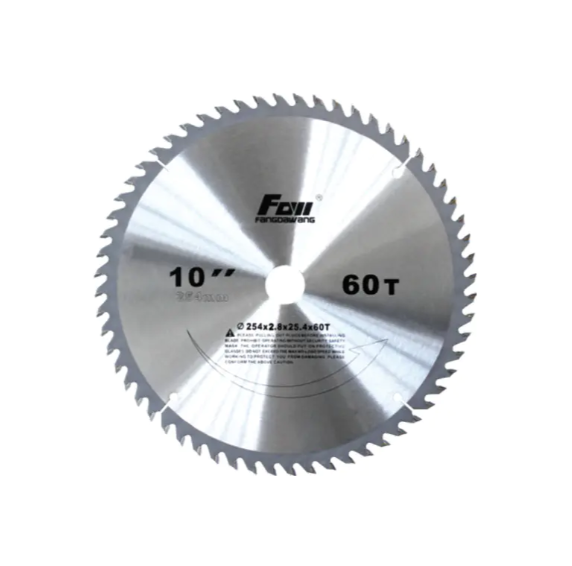
Innovations in TCT Circular Saw Blade Technology
Over the years, TCT (Tungsten Carbide Tipped) circular saw blades have undergone significant technological advancements, making them more efficient, durable, and versatile than ever before. These innovations have not only improved the performance of TCT saw blades but have also broadened their applications across various industries. In this article, we’ll explore some of the most recent technological innovations in TCT circular saw blade design and their impact on cutting performance.
1. Advanced Carbide Tip Technology
The carbide tips on TCT circular saw blades are the heart of the blade's cutting power. Recent innovations have focused on enhancing the material and design of the carbide tips, making them even more durable and efficient.
High-Performance Carbide Alloys: Modern TCT blades now feature carbide tips made from advanced alloys, which increase hardness and resistance to wear. These tips are better able to withstand the heat generated during high-speed cutting, extending the life of the blade.
Laser Welding of Carbide Tips: Laser welding technology has been employed to improve the bond between the carbide tips and the steel body of the blade. This process creates a stronger, more durable attachment that enhances the blade's overall performance and longevity.
2. Optimized Tooth Geometry
Tooth design is one of the most crucial factors in the performance of TCT saw blades. Recent innovations in tooth geometry focus on achieving faster, more precise cuts with less friction and heat generation.
Variable Tooth Design: Many modern TCT blades now feature variable tooth geometries, with teeth of different shapes and sizes placed at strategic positions around the blade. This allows the blade to cut more efficiently, reduce vibration, and improve the overall cutting experience, particularly for hard or composite materials.
Alternative Tooth Angle Configurations: Changing the angles at which the teeth are set helps control the cutting force, enhancing both speed and smoothness. This has allowed TCT blades to achieve higher precision cuts, even in tough or thick materials.
3. Coating Technologies for Improved Performance
Coatings are one of the most significant advancements in TCT circular saw blade technology. Specialized coatings are applied to the blade to enhance its durability, reduce wear, and increase cutting efficiency.
Diamond Coating: In some applications, a thin layer of diamond is added to the surface of the carbide tips. This provides the blade with even greater hardness and wear resistance, making it ideal for cutting abrasive materials such as ceramics, fiberglass, or certain metals.
Non-Stick and Anti-Rust Coatings: Non-stick coatings prevent materials like wood sap, resin, or plastic from adhering to the blade, ensuring a clean cut with less friction. Anti-rust coatings have been developed to protect the blade from moisture and corrosion, extending the blade’s life even in damp or harsh environments.
4. Noise and Vibration Reduction Technology
Noise and vibration are common issues when using circular saw blades, especially in industrial applications where prolonged cutting is necessary. New innovations in TCT saw blade technology aim to reduce these issues, leading to a smoother and more comfortable cutting experience.
Vibration Damping Features: Some TCT blades now feature specially designed body structures or dampening materials that absorb and reduce vibrations during operation. This results in smoother cuts and reduces the strain on both the saw and the operator.
Noise Reduction Design: The use of advanced materials and specific tooth designs has helped to minimize noise levels during cutting. These improvements make TCT blades more suitable for environments where noise control is a priority, such as in residential areas or factories with noise restrictions.
5. Improved Cutting Speed and Efficiency
Cutting speed is an essential factor in many industries, and recent innovations have focused on improving the cutting speed of TCT blades while maintaining or even enhancing cut quality.
Thin Kerf Technology: Thin kerf blades are now more prevalent, designed to remove less material during the cut, which reduces friction, lowers energy consumption, and allows for faster cutting speeds. This makes the cutting process more efficient and cost-effective.
High-Speed Performance: TCT blades are now engineered to withstand even higher cutting speeds, thanks to improved carbide materials and advanced tooth designs. This makes TCT blades even more suitable for high-volume, fast-paced production environments.
6. Environmentally Friendly Manufacturing
As industries strive to reduce their environmental impact, innovations in TCT circular saw blade technology have also addressed sustainability concerns.
Eco-Friendly Materials: Some TCT blades now use more eco-friendly materials in their construction, such as recycled steel bodies or sustainably sourced carbide. These changes help reduce the environmental footprint of the blade production process.
Recyclability: Manufacturers are also focusing on making blades more recyclable. Once the blade has reached the end of its life, it can be recycled more easily, reducing waste and contributing to a circular economy.
7. Smart Technology Integration
The integration of smart technologies into TCT circular saw blades is an emerging trend. These innovations aim to enhance the user experience by providing real-time performance data and improving maintenance practices.
IoT-Enabled Blades: Some TCT blades are now equipped with sensors that can communicate with connected equipment, providing real-time data on blade performance, wear, and overall health. This helps operators make informed decisions about when to sharpen or replace the blade, reducing downtime and improving productivity.
Predictive Maintenance: Smart TCT blades are also equipped with predictive maintenance features that can help reduce the likelihood of unexpected failures. By analyzing cutting patterns and wear over time, the system can predict when maintenance is required, preventing costly interruptions in production.
The continuous innovations in TCT circular saw blade technology have significantly improved their performance, longevity, and versatility. From advanced carbide alloys and tooth geometry to smart technology integration, these innovations ensure that TCT saw blades continue to meet the demanding needs of modern industries. Whether it’s reducing wear, increasing cutting efficiency, or improving user comfort, the latest developments make TCT blades an indispensable tool in any cutting application.
For those looking to explore high-quality TCT circular saw blades and discover more about the manufacturing process, we invite you to visit our website at fangda-tools.com or come see us in person at Fangda Holding Co., Ltd to learn more about our advanced blade technologies and how they can benefit your business.










